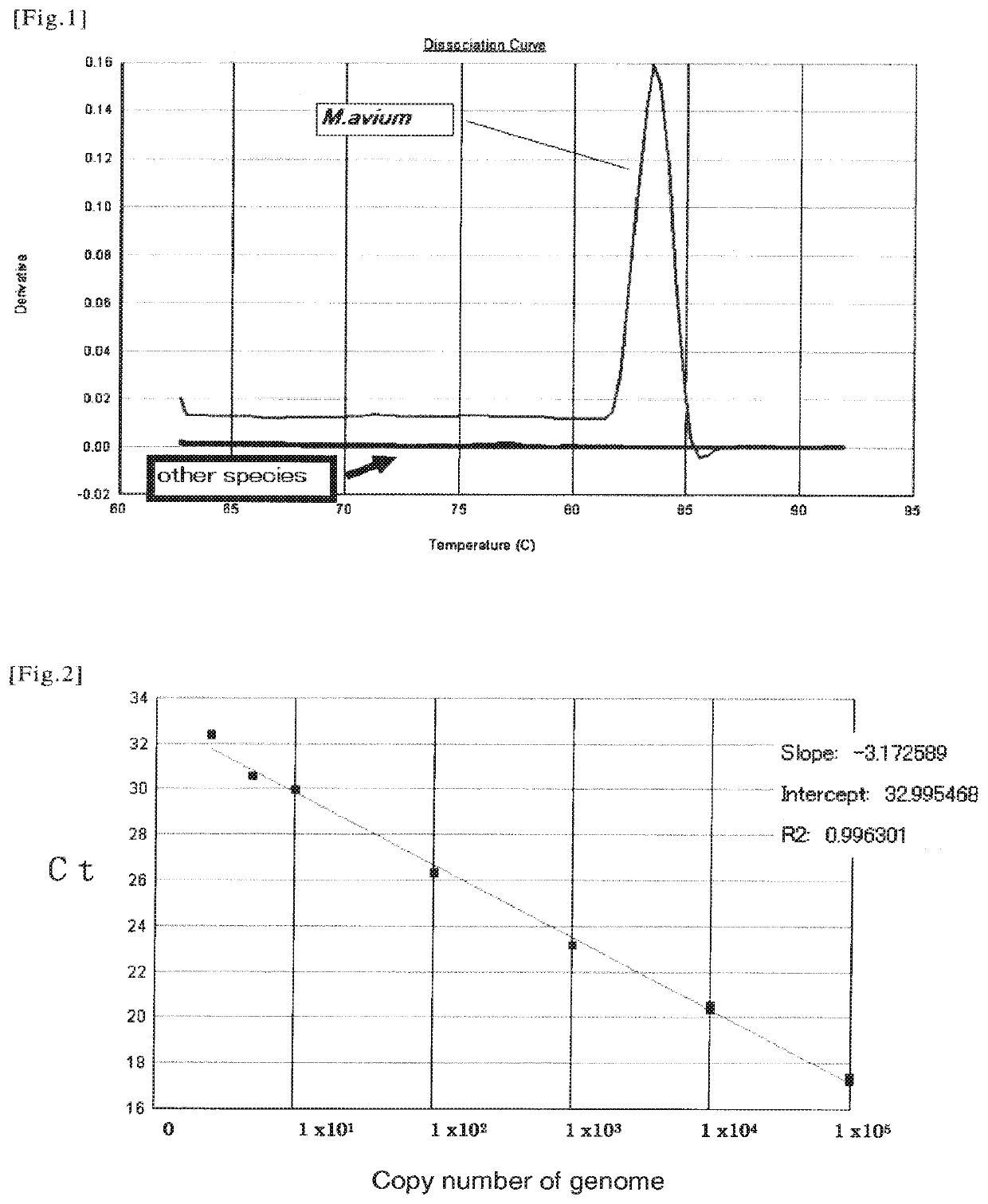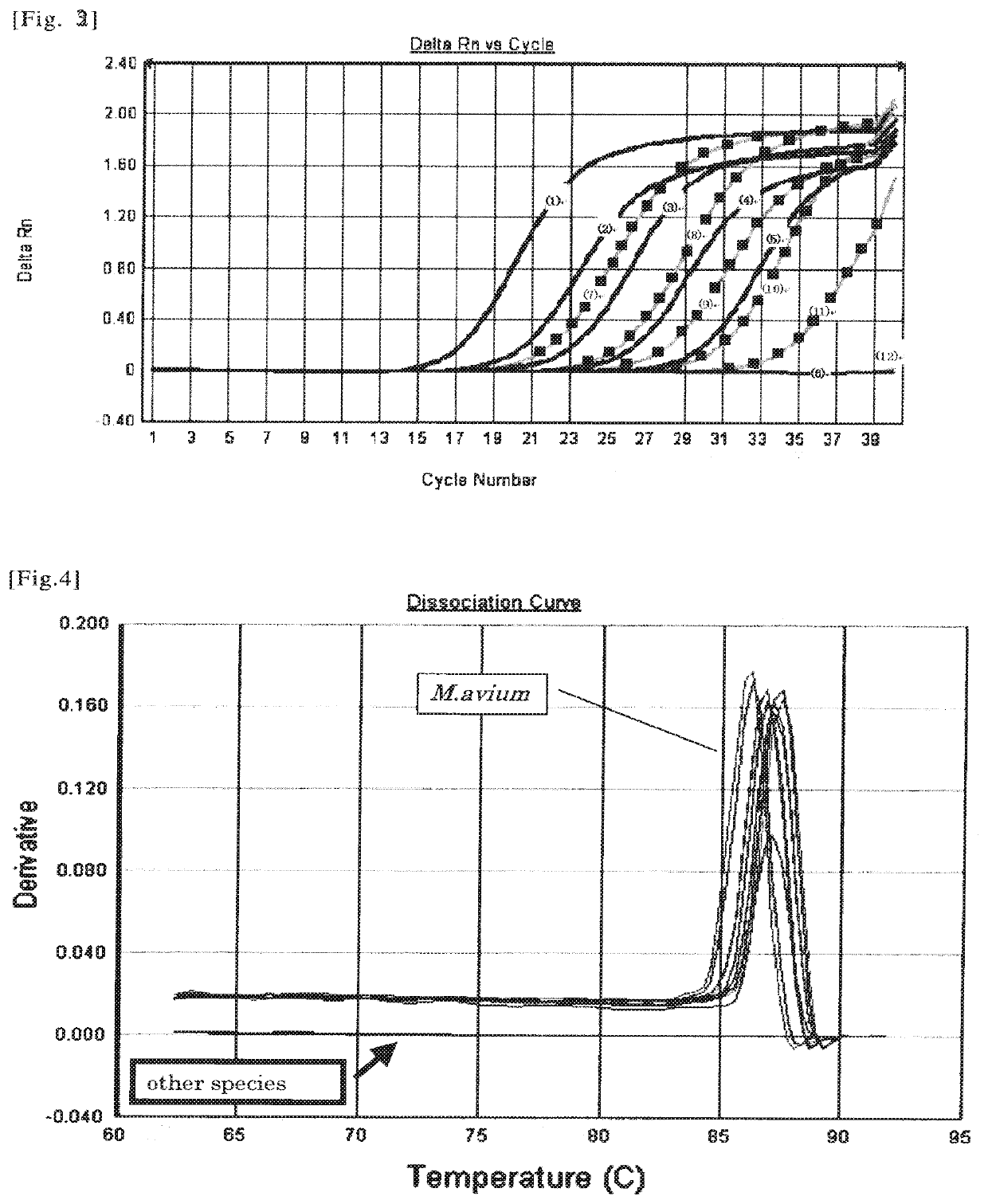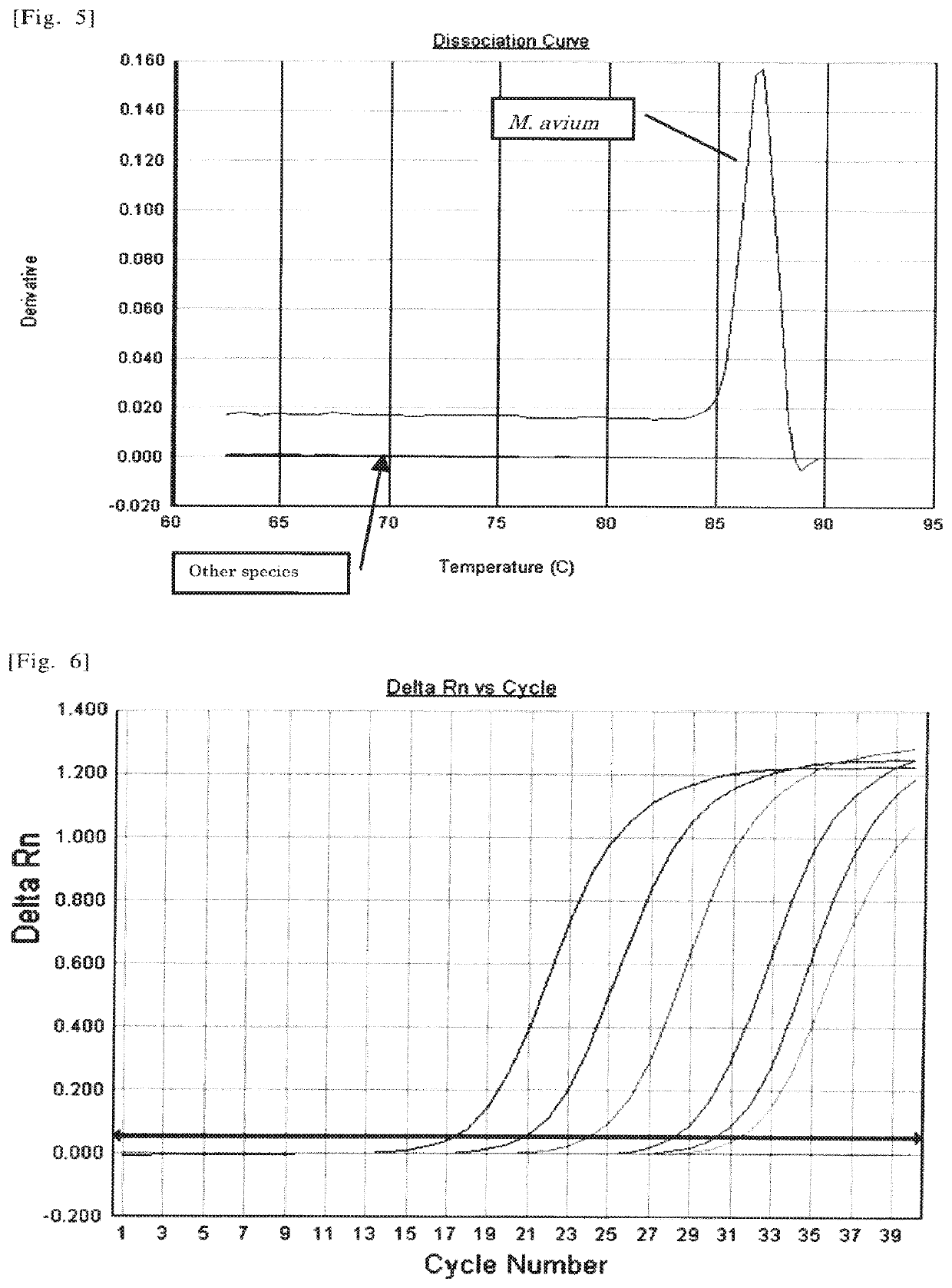Primer and probe for detection of mycobacterium avium and method for detection of mycobacterium avium by using the primer or probe
a technology of mycobacterium avium and primer, which is applied in the field of primer and probe the method for detection of mycobacterium avium by using the primer or probe, can solve the problems of difficult to differentiate tuberculosis from non-tuberculous i>mycobacterium /i>diseases without specific clinical symptoms, and the infectivity of exerting human infection, etc., to achieve rapid diagnosis
- Summary
- Abstract
- Description
- Claims
- Application Information
AI Technical Summary
Benefits of technology
Problems solved by technology
Method used
Image
Examples
example
Example 1: Selection of Clone Derived from M. avium Genome 1
[0314](1) Preparation of DNA Sample Derived from M. avium
[0315]Highly purified genomic DNA derived from Mycobacterium avium TMC16741 strain was obtained from Mycos Research LLC (USA).
[0316]Using 1 to 10 ng of obtained genomic DNA sample derived from M. avium as a material (template), and using Genomiphi V2 DNA Amplification Kit (produced by GE Healthcare Bio-Science AB), whole genome amplification reaction was carried out, and obtained 100 μg or more of amplification product. This amplification product was used as a “purified genomic DNA derived from M. avium” for the following experiments. It should be noted that, purity of the obtained genomic DNA derived from M. avium was confirmed to be good in absorbance measurement level.
[0317]In addition, this purified genomic DNA derived from M. avium was adjusted to give final concentration of 400 ng / μl (in 10 mM Tris-HCl buffer, pH 8.9), and used as “DNA sample derived from M. av...
example 5
Minimum Detection Sensitivity 1
[0405]Using the real-time detection method, verification of detection sensitivity was carried out for a case where the candidate sequence 13 was targeted.
(1) Synthesis of the Primer of the Present Invention
[0406]Using the same instrument and by the similar procedure as used in (1) of Example 2, oligonucleotides of 12Fw_1 and 12Rv_1 were synthesized. And these oligonucleotides were used as a primer.
(2) Preparation of DNA Sample
[0407]Highly purified genomic DNA derived from M. avium was obtained from Mycos Research LLC (USA). The DNA was dissolved in 10 mM Tris-HCl buffer, and quantity of the DNA in the sample was determined by measuring absorbance thereof. The quantity of the DNA (copy number of the genome) in the sample was determined by comparing the obtained quantity of DNA with the measurement value obtained in the same way by measuring absorbance of the known concentration of genomic DNA of M. avium.
[0408]Subsequently, the DNA sample was diluted u...
example 6
[0419]Using the real-time PCR detection method, and in a case where a new candidate sequence 13 (nucleotide sequence of candidate clone 13, consisting of nucleotide sequence shown in SEQ ID NO:4) is targeted, detection of M. avium was carried out.
(1) Synthesis of the Primer of the Present Invention for Detection of M. avium
[0420]Using the same instrument and by the similar procedure as used in (1) of Example 2, oligonucleotides of 12Fw_1 (SEQ ID NO:14) and 12Rv_1 (SEQ ID NO:15) were synthesized and purified.
(2) Preparation of DNA Sample for PCR
[0421]The DNA sample prepared from bacterial cell of M. avium in (2) of Example 2 was used. Firstly, as to the aforementioned DNA sample, the quantity of the DNA in the sample was determined by measuring absorbance thereof. The quantity of DNA (copy number of the genome) in the sample was determined by comparing the obtained quantity of DNA with the measurement value obtained in the same way by measuring absorbance of the known concentration ...
PUM
| Property | Measurement | Unit |
|---|---|---|
| time | aaaaa | aaaaa |
| temperature | aaaaa | aaaaa |
| pressure | aaaaa | aaaaa |
Abstract
Description
Claims
Application Information
 Login to View More
Login to View More - R&D
- Intellectual Property
- Life Sciences
- Materials
- Tech Scout
- Unparalleled Data Quality
- Higher Quality Content
- 60% Fewer Hallucinations
Browse by: Latest US Patents, China's latest patents, Technical Efficacy Thesaurus, Application Domain, Technology Topic, Popular Technical Reports.
© 2025 PatSnap. All rights reserved.Legal|Privacy policy|Modern Slavery Act Transparency Statement|Sitemap|About US| Contact US: help@patsnap.com



